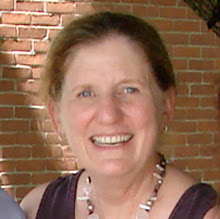
Kathy arranged for my favorite taxi driver, Moustafa, to pick up me and a visiting relative of a fellow teacher for an adventure at the Giza Pyramids. Brad is a young man here working on an airplane contract.
We explored the mortuary temple area of the Great Pyramid while orienting ourselves in this strange and beautiful area. There are tons of tourists everywhere, and loads of camel jockeys trying to sell rides. We walked around to the entrance area of the Great Pyramid and decided we were probably too late to score one of the 150 morning tickets to tour inside. So we walked
 around to the back of the pyramid which is the location of the solar boat museum. These amazing boats were constructed to allow the pharaoh to sail with the gods in the afterlife. Five empty pits were discovered - boats probably stolen long ago in ancient times, but one pit was so well hidden the boat was still there, disassembled and carefully packed into the sealed space. Egyptologists spent 14 years reconstructing the boat, which was in amazing condition.
around to the back of the pyramid which is the location of the solar boat museum. These amazing boats were constructed to allow the pharaoh to sail with the gods in the afterlife. Five empty pits were discovered - boats probably stolen long ago in ancient times, but one pit was so well hidden the boat was still there, disassembled and carefully packed into the sealed space. Egyptologists spent 14 years reconstructing the boat, which was in amazing condition.This was the Stone Age! No metal for nails or tools! The boat was held together with ropes! I have been awed by the engineering and detail of the pyramids and tombs, but this thing took the cake. This highly precise piece of workmanship was constructed using stone tools. It was used once to float the dead pharaoh across the Nile and to his valley temple and then was dissembled and buried. The museum was constructed over the
 original pit, with the boat itself suspended with viewing mezzanines on all sides.
original pit, with the boat itself suspended with viewing mezzanines on all sides.We then strolled over to Kafre's pyramid thinking that we'd tour the interior of it, since we thought we were too late to tour the Great Pyramid. After hunting down the ticket booth, we discovered that morning tickets were still available, so we jumped at the chance to go inside that Great Pyramid.
The steep climb upward was easier than the downward climb in the Saqqara pyramid, although it was very long, probably equivalent to climbing a ladder up 4 stories. At the top of the first half of the climb, the space opened up into a high corbelled ceiling. I had to stand for a few minutes and get my balance because the angle of the ceiling, the stone walls and the upward slanting ladder/stair were all different giving me an odd sense of vertigo. At this point, a blocked off passage went down to another chamber, and the ladder/stair continued up to the King's chamber. At the top we stooped to go through a passage into the antechamber, then stooped again to go into the King's chamber which was a big empty stone rectangle with an empty sarcophagus at one end. I had a creepy feeling of the weight of the stone around me.
 Getting out was easier than going in. No cameras were allowed for some reason - no carvings or paintings that could be ruined by a flash. So we took pictures at the entrance to prove we'd been there.
Getting out was easier than going in. No cameras were allowed for some reason - no carvings or paintings that could be ruined by a flash. So we took pictures at the entrance to prove we'd been there.We meandered back to meet our taxi through an area that was clearly not the tourist route. There were numerous tombs, probably of family members, and deep holes everywhere, many with no covers of any kind. I looked over the edge of one and could barely see the bottom. Some that were more shallow had tunnels which could have been part of the causeway from the valley temple close to the Nile to the mortuary temple close to the pyramid. We ended up in front of the Sphinx and decided to forgo paying to walk around the Sphinx and head back to the coffee house where we planned to meet Moustafa.
Dinner out this evening with friends, Shirley and Rob was at Max's. We earned our dinner by walking, crossing two very busy streets to get there. Crossing streets at night adds one more interesting variable. Egyptians drive with their lights off most of the time, "to save their batteries." So seeing oncoming cars is a bit more problematic. We made it, had a lovely dinner and a great time. We caught a ride back with them - they have their own car. Rob drives like a more cautious Egyptian AND he keeps his lights on!
































